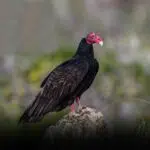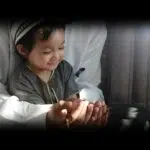An absurd holiday, Turkey Vultures Return to the Living Sign Week occurs annually from March 11 to 17. During this period, turkey vultures, scattered across North America, return to a popular sign in Canisteo, New York. The ‘living’ sign of the city’s name is made up of over 250 Scottish Pines, and around the same time in March every year, March 11 – 17 to be exact, turkey vultures return to roost around it. With no particular origin, a week such as this is bound to be packed with intriguing information.
History of Turkey Vultures Return to the Living Sign
As we have already established, this holiday is far from ordinary and can be interpreted in multiple ways when you hear about it the first time. We aim to clear all the misconceptions by telling you what Turkey Vultures Return to the Living Sign Week is really about. What exactly are turkey vultures? The first thing you might think of is a half turkey, half vulture, and that may not be too far from the truth.
Uncommon as they may sound, turkey vultures are the most widespread amongst the New World Vultures family. Commonly found in the North American region, these birds are scavengers that come to rest in the Scottish Pines of Canisteo, New York. We’re sure you might still be wondering why exactly this bird is named in such a fashion, and that is because of its turkey-like features. Just like the male wild turkey, turkey vultures have bald red heads and dark feathers. However, just like the vultures you’re familiar with, turkey vultures feed exclusively on the carcass of other animals.
These birds are creatures of habit, and even their migration routine proves that. Turkey vultures are known for inhabiting forests, thickets, and caves, so it’s no surprise they found their home in the 300 feet wide expanse of trees known as the Canisteo Living Sign. The historic civic project was originally built by Ed Childs and Harry Smith in 1933, to help visitors navigate the area and as a donation to the Canisteo School District, but there is no history of the creation of Turkey Vultures Return to the Living Sign Week.
Turkey Vultures Return to the Living Sign timeline
Turkey vultures are first referred to as ‘Vultur Aura’ in a book by Carl Linnaeus.
The Canisteo Living Sign in New York is built.
The sign is added to the National Register of Historic Places.
The sign is cleared up and replanted due to dying trees.
Turkey Vultures Return to the Living Sign FAQs
What’s a turkey vulture’s lifespan?
A turkey vulture can live up to 24 years. However, their average life span is 20 years.
Why are vultures bald?
The reason is not one you might expect. They are bald so that the pieces of meat from the carcasses do not get trapped in their feathers.
Why do vultures swarm around together in the spring?
Just like most birds, vultures swarm together in the air to migrate. If you see a swarm of vultures in the early hours of spring or fall, they are most likely contemplating their next location. In the evenings, they have probably just arrived to roost for the night.
Turkey Vultures Return to the Living Sign Activities
Visit the sign
See the phenomenon for yourself by taking a tour around the living sign if you happen to be in the Canisteo area of New York. Make it a fun excursion and invite loved ones to join the ride. Make sure you keep a safe distance and do not do anything to agitate the birds.
Learn more about turkey vultures
There’s so much more to learn about these birds of prey. Today presents the perfect opportunity to learn something new. Do some research and find out all you can about turkey vultures, and don’t be shy to share any fun facts you discover.
Visit a vulture conservatory
There are vulture conservatories spread across the country, dedicated to keeping these birds safe and protected. Visit the one closest to you, and you may be lucky to find a turkey vulture there.
5 Facts About Turkey Vultures We Bet You Don’t Know
A calming scientific name
The scientific name for turkey vultures, “Cathartes aura,” directly translates to “cleansing breeze.”
They are voiceless
Turkey vultures do not have vocal cords, so they make hissing sounds.
An amazing sense of smell
These birds can smell carcasses from a mile away, uncommon in the bird family.
Carcasses expire
Turkey vultures can only smell carrion that is 12 to 24 hours old.
They can’t kill
Although they live on animal carcasses, turkey vultures are the only scavenger birds that can’t kill their prey.
Why We Love Turkey Vultures Return to the Living Sign
It celebrates greenery
Turkey vultures, and birds in general, migrate to find more conducive habitats. They usually flock towards natural greenery, but this is a rare case of such wild birds appreciating a manmade creation, and we’re here for it.
It’s an educational holiday
This week teaches us about the obscure animals called turkey vultures. It reminds us to learn more about them, and ultimately, increase our knowledge about wildlife.
It’s unexpected
This holiday is quirky, to say the least. When you come across the name of the special week, there are different interpretations that come to mind. Discovering its actual purpose is sure to leave you surprised in the best way.
Turkey Vultures Return to the Living Sign dates
| Year | Date | Day |
|---|---|---|
| 2026 | March 11–17 | Wednesday–Tuesday |
| 2027 | March 11–17 | Thursday–Wednesday |
| 2028 | March 11–17 | Saturday–Friday |
| 2029 | March 11–17 | Sunday–Saturday |
| 2030 | March 11–17 | Monday–Sunday |























